Systematic review of gut microbiota composition, metabolic alterations, and the effects of treatments on PCOS and gut microbiota across human and animal studies
- PMID: 40438215
- PMCID: PMC12116390
- DOI: 10.3389/fmicb.2025.1549499
Systematic review of gut microbiota composition, metabolic alterations, and the effects of treatments on PCOS and gut microbiota across human and animal studies
Abstract
Introduction: Polycystic ovary syndrome (PCOS) is an endocrine disorder affecting around 12% of women globally, associated with infertility and various comorbidities. Emerging evidence suggests a crucial role of gut microbiota in PCOS pathophysiology, prompting research to investigate alterations in gut microbial composition in patients with PCOS.
Methods: This systematic review aims to analyze human and animal studies that compare gut microbiota composition, gut-derived metabolites, and treatment interventions in PCOS patients versus healthy controls. A comprehensive literature search was conducted using PubMed, Scopus, and Web of Science, yielding studies examining gut microbiota, metabolomic shifts, and treatment responses in PCOS models and human populations.
Results: Our analysis revealed decreases in alpha diversity in PCOS patients, with more pronounced changes in beta diversity in animal models. Specific bacterial taxa, such as Bacteroides vulgatus, Escherichia-Shigella and Lactobacillus, showed implication in PCOS pathogenesis, suggesting potential microbial markers. Furthermore, discrepancies between human and animal studies show the need for humanized mouse models to bridge this gap. Interventions like probiotics and fecal microbiota transplantation (FMT) showed varying levels of efficacy, with FMT emerging as a more promising but invasive option, offering live bacteriotherapy as a potential therapeutic alternative. Alterations in gut-derived metabolites, including short-chain fatty acids and bile acids, highlighted the multifaceted nature of PCOS, with implications extending to metabolic, hormonal, and gut-brain axis disruptions.
Discussion: In conclusion, PCOS exhibits complex interactions between gut microbiota and metabolic pathways, necessitating further research with standardized methods and larger sample sizes to elucidate the microbiome's role in PCOS.
Keywords: endocrine system diseases; fecal microbiota transplantation; gastrointestinal microbiome; metabolomics; metagenomics; polycystic ovary syndrome.
Copyright © 2025 Hanna, Abbas, Yassine, AlBush and Bilen.
Conflict of interest statement
The authors declare that the research was conducted in the absence of any commercial or financial relationships that could be construed as a potential conflict of interest.
Figures
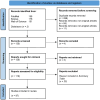
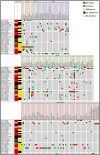
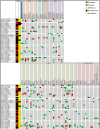

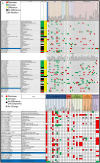

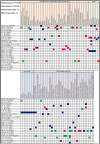
Similar articles
-
Unveiling the complex interplay between gut microbiota and polycystic ovary syndrome: A narrative review.Clin Nutr. 2024 Dec;43(12):199-208. doi: 10.1016/j.clnu.2024.10.028. Epub 2024 Oct 22. Clin Nutr. 2024. PMID: 39481287 Review.
-
Perturbations in gut microbiota composition in patients with polycystic ovary syndrome: a systematic review and meta-analysis.BMC Med. 2023 Aug 9;21(1):302. doi: 10.1186/s12916-023-02975-8. BMC Med. 2023. PMID: 37559119 Free PMC article.
-
Balancing Act: Exploring the Gut Microbiota-Brown Adipose Tissue Axis in PCOS Pathogenesis and Therapeutic Frontiers.Front Biosci (Landmark Ed). 2024 May 30;29(6):208. doi: 10.31083/j.fbl2906208. Front Biosci (Landmark Ed). 2024. PMID: 38940030 Review.
-
Gut Microbiota in Patients with Polycystic Ovary Syndrome: a Systematic Review.Reprod Sci. 2022 Jan;29(1):69-83. doi: 10.1007/s43032-020-00430-0. Epub 2021 Jan 6. Reprod Sci. 2022. PMID: 33409871
-
Modulatory impact of Bifidobacterium longum subsp. longum BL21 on the gut-brain-ovary axis in polycystic ovary syndrome: insights into metabolic regulation, inflammation mitigation, and neuroprotection.mSphere. 2025 Feb 25;10(2):e0088724. doi: 10.1128/msphere.00887-24. Epub 2025 Feb 3. mSphere. 2025. PMID: 39898662 Free PMC article.
References
-
- Arab A., Hossein-Boroujerdi M., Moini A., Sepidarkish M., Shirzad N., Karimi E., et al. . (2022). Effects of probiotic supplementation on hormonal and clinical outcomes of women diagnosed with polycystic ovary syndrome: a double-blind, randomized, placebo-controlled clinical trial. J. Funct. Foods 96:105203. 10.1016/j.jff.2022.105203 - DOI
-
- Baltazar-Díaz T. A., González-Hernández L. A., Aldana-Ledesma J. M., Peña-Rodríguez M., Vega-Magaña A. N., Zepeda-Morales A. S. M., et al. . (2022). Escherichia/shigella, SCFAs, and metabolic pathways-the triad that orchestrates intestinal dysbiosis in patients with decompensated alcoholic cirrhosis from Western Mexico. Microorganisms 10:1231. 10.3390/microorganisms10061231 - DOI - PMC - PubMed
Publication types
LinkOut - more resources
Full Text Sources
Miscellaneous

